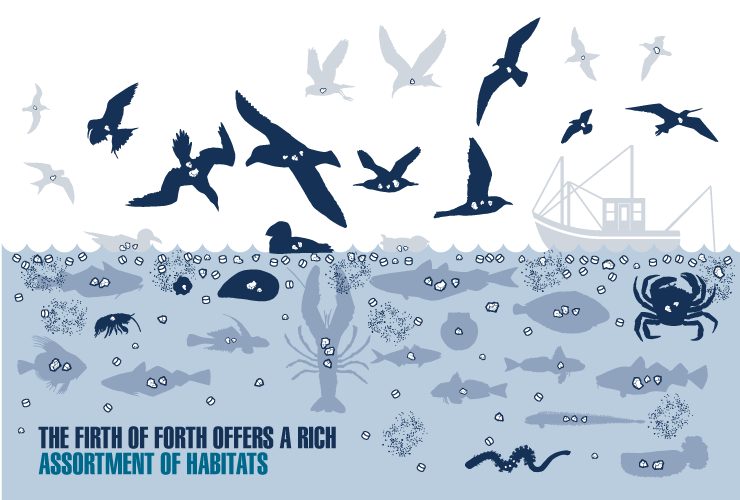Scientists have found many of the animals living on the Forth mistake plastic for food. Post mortems of gulls, fulmars, terns and puffins have found nurdles in their stomachs. Under water shellfish and filter feeders in particular are some of the marine animals most susceptible to plastic pollution at a microscopic level.
Every year millions of marine animals and seabirds make the Firth of Forth their home. A rich assortment of habitats means that most of the coastline and the islands are legally protected by national and international wildlife designations.
Fishing villages' line the banks of the Firth of Forth and the small-scale, inshore shellfish fisheries rely on a healthy ecosystem to support their catch.
With no way of removing nurdles and other microplastics and with so little known about the effects on animals we must act locally to reduce the threat to our wildlife.
Below are a number of animals which live in the Firth of Forth known to ingest plastics
Roll over the animals to find out more
